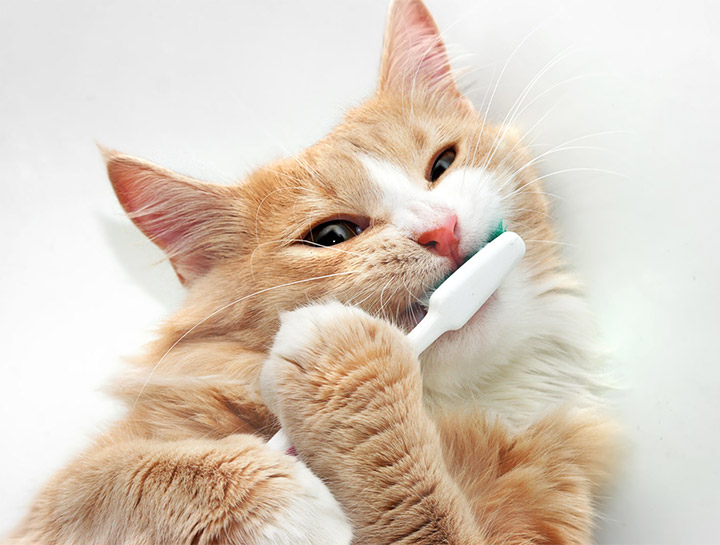February Article

Periodontal Disease in Pets
Periodontal disease is the most common health condition in pets; it is also one of the most under-treated conditions. Think of each of your pet’s teeth as an iceberg. The visible area of the tooth (the crown) might show a little plaque, but do you know what is lying underneath the surface? A small amount of damage on the crown may mean there is much more damage being done around the roots of the tooth. Plaque, bacteria, and saliva harden to make a substance called tartar. This tartar squeezes its way underneath the gum line which causes pain and gingivitis (swelling of the gums.) The longer the tartar is allowed to sit under the gums, the more damage it does to the surrounding tissues. Not only is the tartar poking and prodding at the gums, bacteria are also secreting toxic chemicals into the bloodstream and are taken to other areas of the body. Major organ systems can be compromised with irreversible damage because of periodontal disease. Cardiovascular disease, bacterial pneumonia, diabetes mellitus, osteoporosis, along with disease of the kidneys and liver can result. One of the saddest things we see is a pet in its senior years whose oral health has been neglected. Now, it requires multiple extractions to eliminate pain and infection.
So how do you determine how much damage has been done underneath the gum line? During your pet’s visual oral exam, the veterinarian assesses the mouth for any signs of gingivitis, bad breath, broken or chipped teeth, the accumulation of plaque, bleeding gums, or pain in or around the mouth. Based on this examination, he or she may recommend a professional dental cleaning. For these cleanings, the patient is put under general anesthesia so that the nurse and veterinarian may inspect each individual tooth. Anesthesia ensures that your pet gets the best possible dental assessment and treatment possible while keeping the pet comfortable and the staff safe. Each tooth is examined as its own individual structure. They are checked for structural damages, sulcus depths, signs of decay, and any abnormalities that need to be documented. After evaluating each tooth, the nurse can then begin to clean each crown, as well as underneath the gum line using special equipment. Gingival and subgingival scalers are used to debride all the tartar and calculus away from above and below the surface. After the teeth have been cleaned, the teeth are polished to remove any microscopic abrasions and fluoride is applied to keep breath fresh longer.
There are several ways to keep your pet’s teeth clean at home. Pets start to show visible signs of periodontal disease by the time they reach 3 years of age. Some small dog breeds such as Yorkshire Terriers and Schnauzers may show signs even sooner. Although most pets are leery about a toothbrush at first, they can be conditioned to tolerate or even enjoy bushing time. Small toothbrushes made specifically for animals’ mouths are available along with species -specific toothpastes that are safe to swallow. Please do not use human oral hygiene products; this may be very harmful to your pet. At home bushings are one of the most ideal forms of at home care, but if your pet will not tolerate a toothbrush there are other options. Oral hygiene solutions are available as a rinse as well as a water additive that dissolves bacteria that causes bad breath every time they drink. Dental chews, treats, and toys can also be used to scrape tartar off of the teeth. Not only can home care save you money and time between professional dental cleanings, it also keeps your pet healthier and happier by having a clean, pain free mouth!
